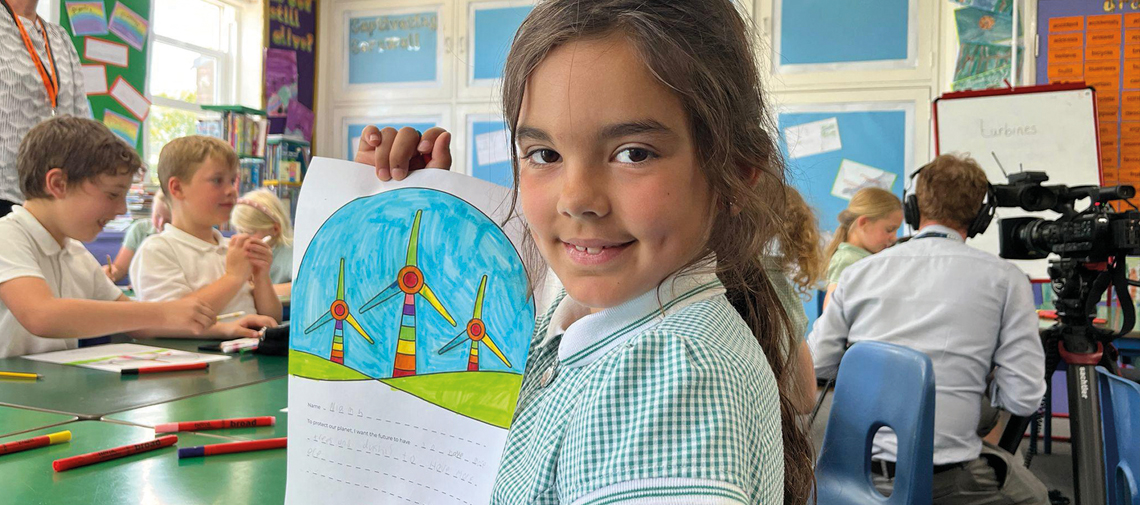How Bishop Cornish CofE primary school in Cornwall moved to renewable energy

The winds of change are blowing through Bishop Cornish CofE Primary School in Saltash, Cornwall, as it moves towards net zero. To secure affordable renewable energy for the future, the school’s charity has purchased part-ownership of a new Scottish wind farm. It’s a move that will see the school save an estimated £235,000 on electricity bills and 802 tonnes of CO2 (the equivalent of planting 33,000 trees) over the 25-year lifetime of the wind farm.
For headteacher Tracey Fletcher, the investment is much more than the welcome savings on energy bills. ‘We will be able to provide our children with the understanding and knowledge that they too can make a difference to a global climate crisis,’ she says.
The school and pre-school, with 242 pupils aged two to 11, will have electricity supplied by the cooperative wind farm project which is being developed by Ripple Energy at Kirk Hill in Ayrshire. Although 500 miles away, the wind farm was an obvious fit for the CoE voluntary aided school, says Sarah Adkins, chair of trustees, at the Bishop Cornish Education Centre Charity.
‘Bishop Cornish has a track record of sustainable initiatives: it was the first “Zero to Landfill” school in Cornwall and also has solar photovoltaic panels. Previously, our charity raised £400,000 to build an award-winning energy-efficient timber frame and straw bale eco-education centre for the school and community. This was partly funded by a grant from the Landfill Communities Fund, and supported by pupil fundraising, community donations of materials and charity savings.
‘The wind farm part-purchase, using £66,000 of the charity’s saved investments, is an important milestone in the school achieving its net zero goal. I work as an environmental solicitor, with expertise in the renewable energy sector, so was able to ensure that the board undertook comprehensive due diligence before we went ahead.’
Bishop Cornish School is joined by 18 businesses and more than 5,600 individuals investing in the Kirk Hill wind farm co-op, raising a total of £13.2m. Members will be able to stabilise their electricity bills, with savings based on their share of the energy generated. These savings (and rebates) will reflect the difference between the wholesale market price for electricity and the wind farm’s low and stable operating costs. When market prices are high, savings will be high. When the market price is lower, savings fall too. The net effect will be to help stabilise bills.
Electricity will be supplied through the grid by Ripple Energy’s utility partners. Members are able to generate more power than they use, as the cap on ownership is equivalent to 120% of their consumption.
Ripple’s first wind farm won Inspirational Co-op of the Year 2021. Construction on Kirk Hill began this summer and it is expected to switch on in late 2023. The wind farm will provide a community benefit fund of £94,000 a year, likely to focus on fuel poverty actions or environmental projects. Reservations for Ripple’s third project opened in May, and more than 1,000 people signed up.
Further inspiration
Sign up to FundEd to access grants and funding support

